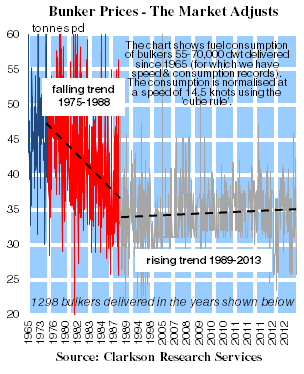The International Chamber of Shipping (ICS) has reiterated its support for the development of a global system of monitoring, reporting and verification (MRV) of green house gases from ships but said support for the UN's International Maritime Organization plan depends on making it simple, based on fuel consumption and that it not become a compulsory market-based scheme of mandatory energy indexing for all ships.
ICS stated it has concerns about the recent proposal by the European Commission for a regulation mandating a regional system.
In related news the ICS has submitted detailed comments to the International Accounting Standards Board (IASB) on its controversial proposals to overhaul international accounting rules for leases, which could have an impact on contracts used in international shipping, including those governing operational arrangements.
Following intensive discussion amongst its member national shipowners’ associations during the last few weeks, the ICS comments represent the consensus view of the world’s shipowners.
“ICS has again tried to explain to IASB that the use of a variety of shipping contracts, including time and voyage charters, reflects the long-established modus operandi of the shipping industry. These arrangements are transportation service contracts. They are not an attempt to disguise the use of financial leases, or the ‘Enron’ scale abuses which the new IASB standards are intended to prevent," Isaid CS Secretary General, Peter Hinchliffe.
He added “Shipowners have no problem with being transparent about such arrangements which can be dealt with through notes in company accounts, but they should not be treated as balance sheet liabilities.”
“The majority of our members still have concerns about the latest IASB proposals, which, if ever implemented, could even result with some companies becoming in technical breach of existing covenants with financial institutions,” Hinchliffe added.
In its latest comments, ICS objects to the IASB proposals in principle and highlights their complexity and the difficulties that many shipping companies would face in complying with them. ICS seriously questions the benefits to third parties’ understanding of the financial position of shipping companies relative to the cost and complexity involved with implementing the proposals. ICS therefore requests that the IASB drops its proposals and instead, if felt necessary, make improvements to the classification of leases in existing IASB standards.
Post to be found at:
http://www.ctl.ca/news/international-chamber-of-shipping-backs-emission-reporting-challenges-proposed-new-accounting/1002614773/



 ShareThis
ShareThis
 dwt
delivered between 1965 and 2013. Some have been scrapped, but they help
plot the long-term trend. To make the comparison more consistent, each
ship’s fuel consumption was adjusted to a standard 14.5 knots, using the
cube rule. The resulting bunker consumption for each ship is plotted
against its delivery date. The dates run from 1965 to 2013, and the
consumption levels range from below 25tpd to well over 60tpd.
dwt
delivered between 1965 and 2013. Some have been scrapped, but they help
plot the long-term trend. To make the comparison more consistent, each
ship’s fuel consumption was adjusted to a standard 14.5 knots, using the
cube rule. The resulting bunker consumption for each ship is plotted
against its delivery date. The dates run from 1965 to 2013, and the
consumption levels range from below 25tpd to well over 60tpd. 


